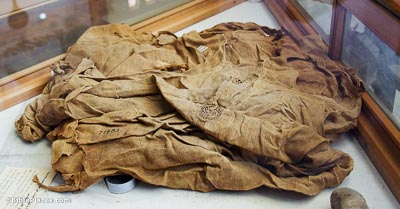Mordecai tore his clothes and put on sackcloth with ashes (Esther 4:1).
Sackcloth was rough fabric that was usually used to make sacks, not clothing. It is somewhat similar to modern burlap. It is also interesting that the Hebrew word is saq, a word that has been borrowed into the English language. Ancient fabrics are rarely preserved over thousands of years, but the dry climate of Egypt kept this ancient piece of sackcloth from decomposing.






